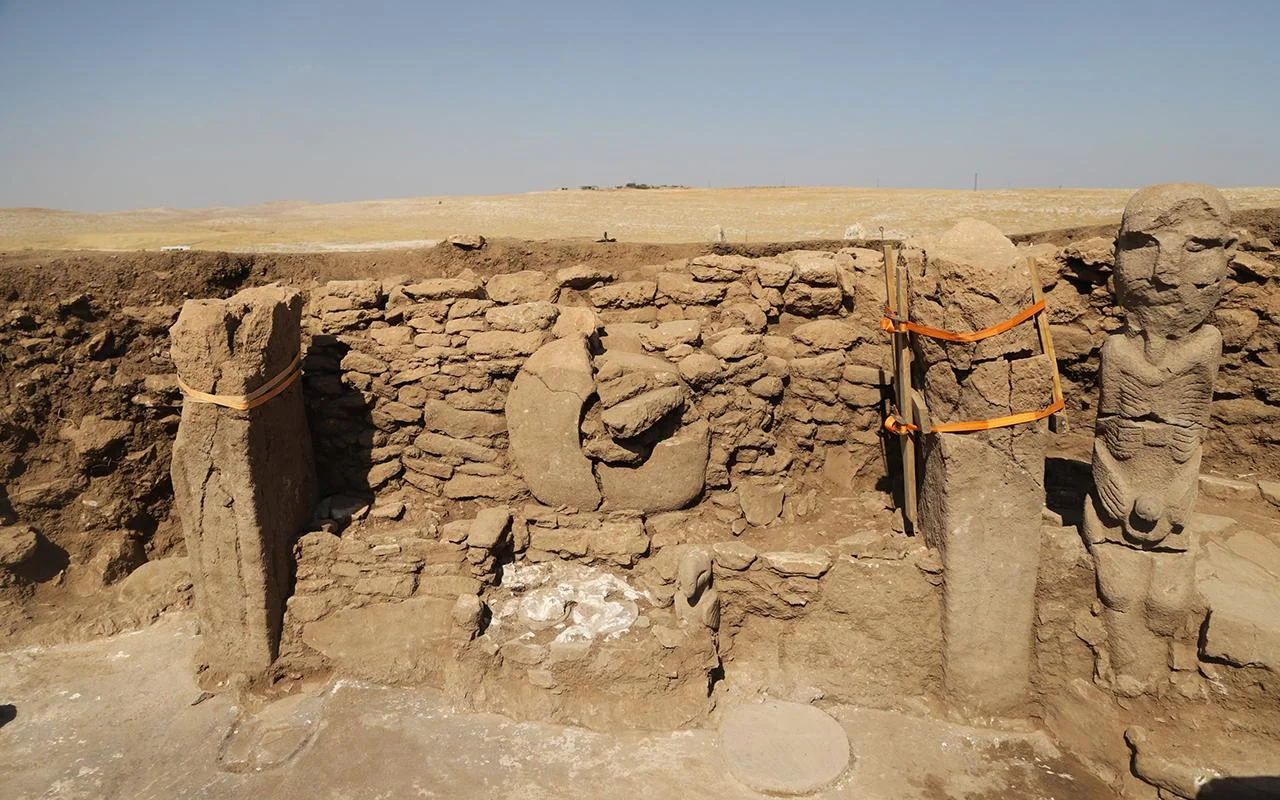According to a recent press announcement by the Turkish Ministry of Culture and Tourism, archaeologists in Turkey have uncovered several new monumental statues and architectural elements at Göbekli Tepe and Karahan Tepe. These findings are part of the ongoing “Stone Hills Project,” an archaeological endeavor.

Göbekli Tepe, often referred to as the “zero-point of history,” is a known ancient Mesolithic temple, with the main structures dating back to the Pre-Pottery Neolithic A (PPNA) and Pre-Pottery Neolithic B (PPNB) periods, approximately 10,000 years ago. Karahan Tepe, situated about 40 kilometers away, shares a similar historical context.
Excavations have revealed monumental statues, architectural elements, and painted sculptures, from the pre-Pottery Neolithic era (PPNA and PPNB) from the 10th to 9th millennia BCE. The discoveries include a remarkable painted boar statue at Göbekli Tepe, adorned with red, white, and black pigments, which is considered one of the oldest painted statues from the Mesolithic period. This boar statue was found on a stone bench adorned with various symbols, including an H-shaped symbol, a crescent, snakes, and human faces.




What makes Karahan Tepe particularly intriguing is its unique winter solstice alignment, making it an important settlement of the Neolithic period. The site covers an area larger than Göbekli Tepe and has been known to archaeologists since 1997.
At Karahan Tepe, researchers uncovered a 2.3-meter tall statue, which is described as one of the most impressive examples of prehistoric art. This lifelike statue depicts a seated figure holding a phallus in both hands. This statue, dating back to around 9400 BCE, is considered the earliest example of a realistic human sculpture and is taller than the famous Urfa Man, making it one of the most ancient depictions of a human.
In addition to these human representations, a vulture statue was found at Karahan Tepe, with a detailed beak, eyes, and wings, suggesting a high level of craftsmanship. Previous excavations at these sites have also unearthed various animal sculptures, including snakes, insects, birds, rabbit features, gazelle components, and the hind legs of an unidentified animal.
The Stone Hills Project, led by the General Directorate of Cultural Assets and Museums of the Republic of Turkey Ministry of Culture and Tourism, involves extensive archaeological work in seven areas, including Göbekli Tepe and Karahan Tepe. This project has been ongoing since 2017 and is expanding our understanding of the prehistory of this region.
The findings at Göbekli Tepe and Karahan Tepe, located in the southeastern Şanlıurfa province, continue to astonish us and challenge our preconceptions about the past.


